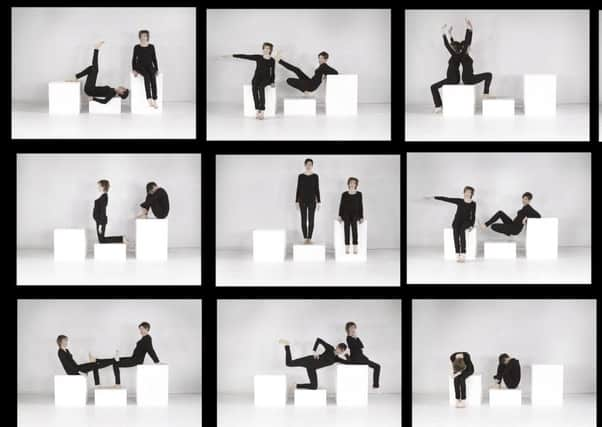Art reviews: Jacqueline Donachie, Fruitmarket, Edinburgh | Amanda Ross-Ho, Tramway, Glasgow


Jacqueline Donachie: Right Here Among Them, Fruitmarket Gallery, Edinburgh ****
Amanda Ross-Ho: Untitled Period Piece, Tramway, Glasgow ***
The Bar will be staffed on Fridays and Saturdays from 1pm-3pm by members of the Fruitmarket’s youth project, Fresh Fruit. However, when not staffed, it is an imposing concrete form which cuts impressively across the lower gallery. And here lies an important contrast at the heart of Donachie’s work: there can be few artists who bring together socially engaged practice with rigorous, formal sculpture characterised by hard-edged urban materials.
Advertisement
Hide Ad“Community” is a word that lies at the heart of this important mid-career show. Often, Donachie’s ideas evolve through working with groups of people: the trailer tent Temple of Jackie (2011) has been a soup kitchen and a pop-up cinema and now houses a DJ’s mixing desk which will be used for occasional events during the show. But even when the work is not overtly participatory, she is concerned with ideas of self and other, individual and community, the extent to which difference is tolerated, and what art can bring to all this.
The ways in which some people are forced to navigate the world differently is something Donachie has observed first hand as several members of her family suffer from the inherited degenerative condition myotonic dystrophy. In a film piece called Pose Work for Sisters (referencing Bruce McLean’s 1971 work Pose Work for Plinths), Donachie (who does not have the condition) and her sister Susan (who does) use their bodies to make a series of sculptural shapes. The women are physically very similar – tall and willowy with short dark hair – though occasionally one notices Susan’s movements are slightly impeded. The slightest difference in a throw of the genetic dice is enough to prescribe a very different experience of being in the world.
This is a key element of the show, if an unobtrusive one; Donachie is not foregrounding the personal. In fact, the monitor sits atop a much bigger work, a ramp made of checker plate steel to the same specifications as a wheelchair access ramp. Portentously titled In the End Times, it takes up space both physically and psychologically, speaking, perhaps, of the lengths to which a disabled person might have to go simply to enter a building. However, having permission to look through the lens of the personal, one looks afresh at Winter Tress, two tall structures made from scaffolding tubes. Perhaps they are also Jackie and Susan, one tall and straight, the other leaning.
Yet, along with most of the works on the upper floor, they could also be viewed purely in terms of their sculptural qualities: colour and form, weight and balance, how they occupy space. The set of spheres in Between One Thing and Another play with weights and materials – some are large and made of brown paper, others small and made of bronze. Held together by a network of ropes they seem to huddle together and balance one another, which is also, perhaps, what communities do. In An Era of Small Pleasures, a “paper chain” made from strips of leather, Donachie again plays with notions of heavy and light; for all its apparent physical weight, the work has a light touch.
Walk With Me is a line made from aluminium tubing, painted boldly in green, which zig-zags across the upper gallery and cuts into the space between the two floors. It seems to obey its own rules in terms of navigating space, and it reads like an invitation. It’s as if Donachie, for whom participation is often important, is inviting us to take a walk with her, to see other ways of navigating the world, perhaps even gain another perspective on the times in which we live.
Another artist who is addressing the times – though, in her case, through the lens of the past – is Los Angeles-based Amanda Ross-Ho, whose show in Tramway 2 is her first solo exhibition in the UK. This theatrical “period piece” is inspired by the 1930s, particularly by Charlie Chaplin’s film Modern Times, made during the Great Depression. By implication, it seems also to address today’s economic downturn.
Advertisement
Hide AdArtists employ a variety of tactics to conquer a space as big as Tramway 2, and Ross-Ho’s is to make one big statement while also attending to the smallest details. Twenty-five pairs of oversize trousers – 24 black, one red – hang on the wall along the length of the space, their pocket linings turned out. They mingle, as Chaplin does, the slapstick and the serious: the men in suits got too big for their boots and now their pockets are empty. A projection of a barber-shop clock (running backwards, designed to be viewed in a mirror) speeds through a day in the course of an hour, as unsettling as it is comical. Perhaps we don’t need reminding that the clock is being turned back, all too quickly, to the 1930s.
Three mirrored tables show a selection of small objects in black, white and (occasionally) red. Among the paraphernalia of the garment factory – cut patterns, pins, spools of thread – there are clock hands, children’s trainers, 3D printed models of oversize silverfish (creepy-crawlies and household pests). Other objects make small interventions in the space: a pair of shoes next to a pillar, a small red step ladder, a bolt of fabric laid across two chairs. These small items draw the viewer in to a longer exploration, but what they have to tell us remains opaque.
Advertisement
Hide AdOne is reminded of the tendency Tramway 2 has to dwarf almost anything that is put into it. While Ross-Ho’s work contains an important and timely idea, and an interesting way of approaching it, it leaves one feeling that more is needed to make an impression on a space this size. n
Jacqueline Donachie until 11 February; Amanda Ross-Ho until 4 February